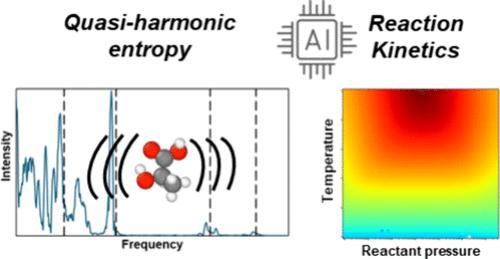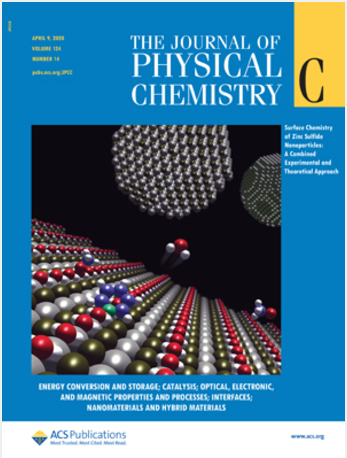Kinetic Consequences of Quasi-Harmonic Entropies Calculated with Machine Learning Interatomic Potentials for Microkinetic Modeling
IF 3.2
3区 化学
Q2 CHEMISTRY, PHYSICAL
引用次数: 0
Abstract
Microporous catalysts are ubiquitous in chemical processes including sustainable transformations of biobased feedstocks into fuels and fine chemicals. The mechanistic insights needed to design next-generation microporous catalysts can be obtained with ab initio simulations coupled with microkinetic modeling, yet active site confinement complicates an accurate determination of adsorbate entropies, which, in turn, affect predictions of rate and equilibrium constants. In this study, we developed a machine learning force field (MLFF) strategy to rapidly predict temperature-dependent quasi-harmonic adsorbate entropies in zeolite Beta, reducing the number of compute-intensive ab initio molecular dynamics calculations needed to construct a microkinetic model. These entropies directly impacted the kinetics of a model parallel reaction mechanism. We chose lactic acid dehydration to acrylic acid on aluminosilicate zeolite Beta to explore the pathway dependence of unselective product formation and initial deactivation mechanisms using microkinetic modeling with our MLFF entropy strategy. The resulting quasi-harmonic entropy approximations led to shifts in steady-state coverages that impacted reaction orders and product selectivity. At low lactic acid partial pressures, concerted monomolecular decarbonylation is favored over Brønsted acid sites, which then shifts at high lactic acid partial pressures to concerted bimolecular condensations into lactic acid oligomers. Sequential pathways mediated by adsorbed alkoxide or carbonyl intermediates have no kinetic relevance at these conditions. These findings provide a strategy to integrate quasi-harmonic entropies into microkinetic modeling that is scalable with reaction temperature and applicable to a wide range of catalysts and catalytic cycles.

用机器学习原子间位势计算的准谐波熵对微动力学建模的动力学影响
微孔催化剂在化学过程中无处不在,包括生物基原料向燃料和精细化学品的可持续转化。设计下一代微孔催化剂所需的机理认识可通过自证模拟与微动力学建模相结合的方法获得,但活性位点的封闭性使吸附剂熵的准确测定变得复杂,而吸附剂熵反过来又会影响速率常数和平衡常数的预测。在这项研究中,我们开发了一种机器学习力场(MLFF)策略,用于快速预测沸石 Beta 中与温度相关的准谐波吸附熵,从而减少了构建微动力学模型所需的计算密集型 ab initio 分子动力学计算的数量。这些熵直接影响了平行反应机制模型的动力学。我们选择了在铝硅酸盐沸石 Beta 上将乳酸脱水为丙烯酸的方法,利用微动力学模型和 MLFF 熵策略来探索非选择性产物形成的路径依赖性和初始失活机制。由此得出的准谐波熵近似值导致了稳态覆盖率的变化,从而影响了反应顺序和产物选择性。在低乳酸分压下,单分子脱羰基反应比布氏酸位点更有利,然后在高乳酸分压下转变为双分子缩合成乳酸低聚物的反应。在这些条件下,由吸附的烷氧基或羰基中间体介导的顺序途径与动力学无关。这些发现提供了一种将准谐波熵纳入微观动力学建模的策略,该策略可随着反应温度的升高而扩展,并适用于多种催化剂和催化循环。
本文章由计算机程序翻译,如有差异,请以英文原文为准。
求助全文
约1分钟内获得全文
求助全文
来源期刊

The Journal of Physical Chemistry C
化学-材料科学:综合
CiteScore
6.50
自引率
8.10%
发文量
2047
审稿时长
1.8 months
期刊介绍:
The Journal of Physical Chemistry A/B/C is devoted to reporting new and original experimental and theoretical basic research of interest to physical chemists, biophysical chemists, and chemical physicists.
 求助内容:
求助内容: 应助结果提醒方式:
应助结果提醒方式:


